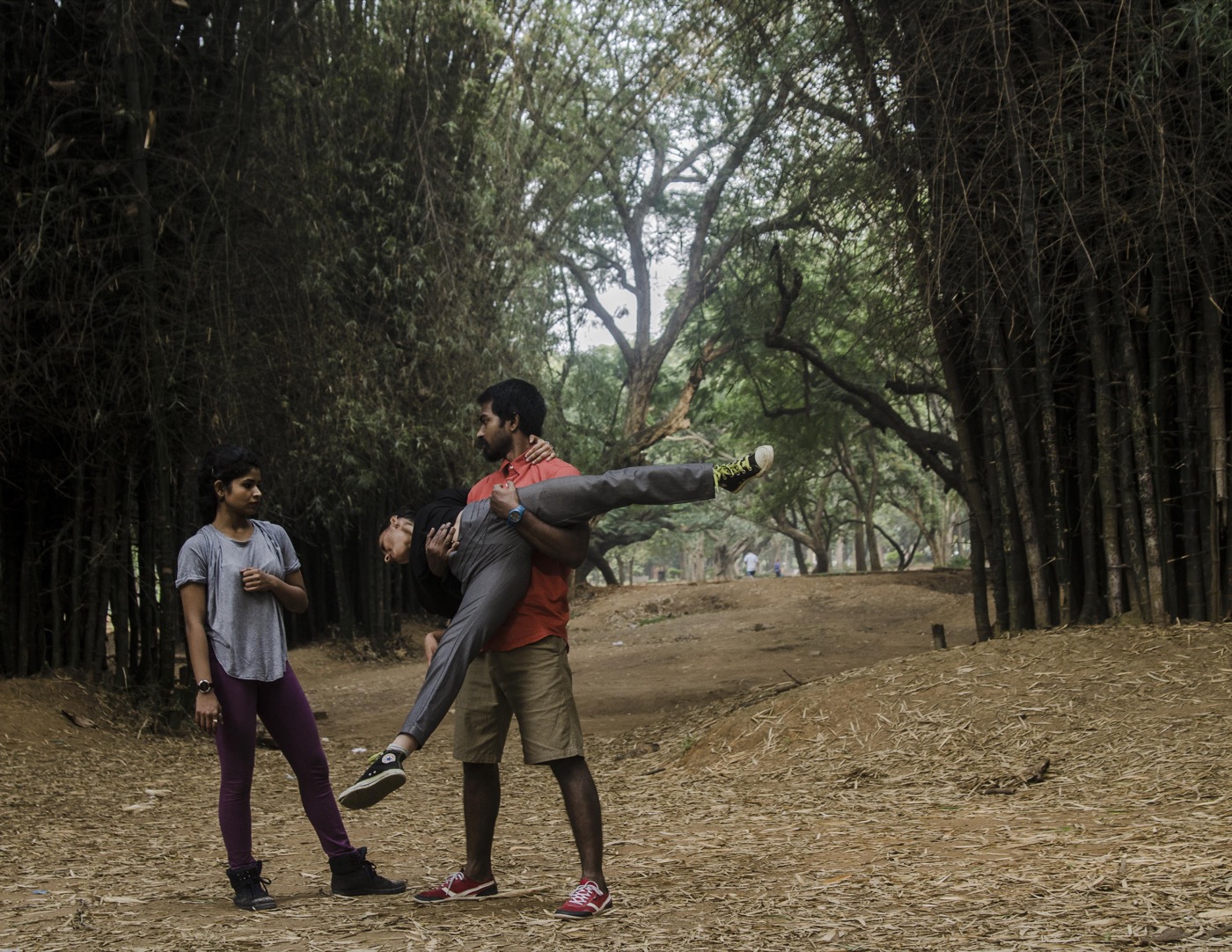One Saturday morning, at 6:00 AM, three dancers assembled near Bangalore’s artery, M.G.Road.
They did not know why exactly they were there or what they would do. But they knew they wanted to move around this familiar place, slow down with it, spend time with it in a strange hour.

They began their day as dancers do—stretching their bodies with lamp posts, No Parking poles, and each other.

As they meandered the still-yawning heart of the city, their morning walk turned into a dance.



It was a slow dance—meditations at places they had passed too many times. In front of Cauvery, shuttered with its sandalwood air, passersby asked if this was a performance.


It was hard to say. It might have been discovery. A sea route replaced by urban terrain. It could have been tribute. Or simply a pause to take stock of place—quickening pulse, shifting pictures.

This old place, now jazzed up and made over, still seemed to be reinventing itself. Does a landmark remain a landmark if it no longer looks the same?

Thoughts and movements digressed into bylanes. The dance collided with borrowed walls, stained with another artist’s meanings.


Call it a history lesson. Of favourite hangouts and morning rituals. Of archeology and maps—joggers’ trails imprinted into shared ground. For the dancers, the trails led to bamboo groves. Those leaf-strewn clearings became ballet floors. It was hard to tell time by shadows here.


Beyond the brief wilderness, the neighbourhood was all shiny.

And tall. An entire world now stacked up in needly, glass buildings that reached above their heads. Just some years ago, the sky had looked different.


As they made their way home, the dancers broke into a little jig. A punctuation for a moment, when every street corner and edifice could make no promises about how long it would stay.





